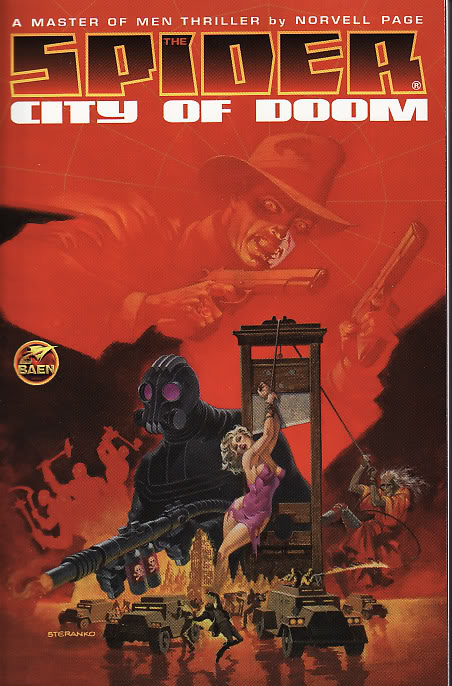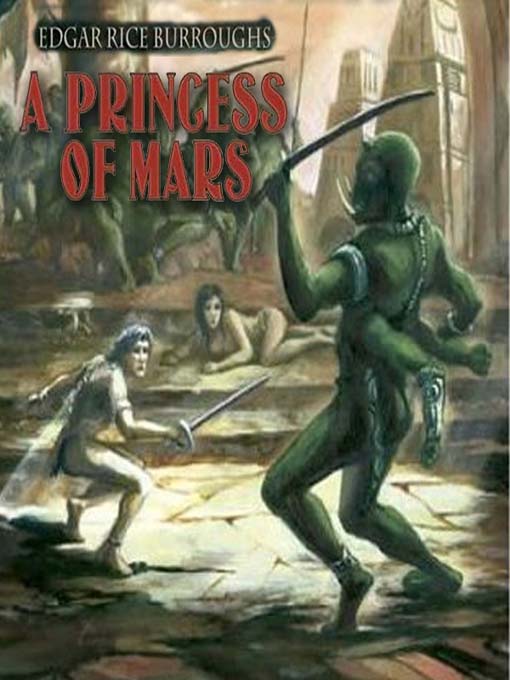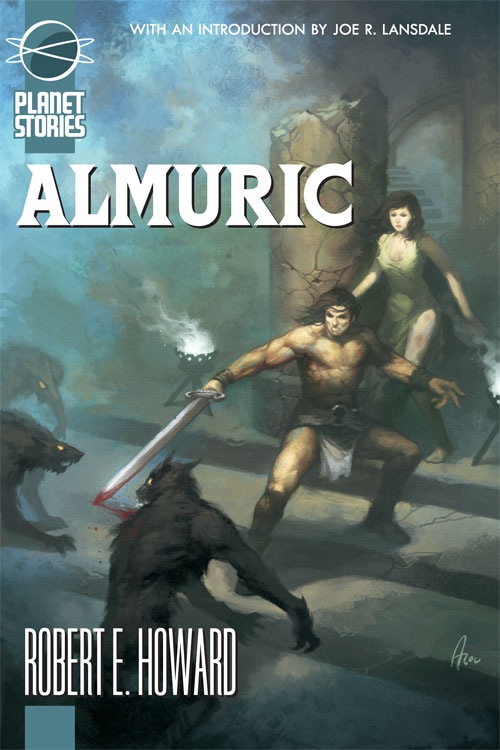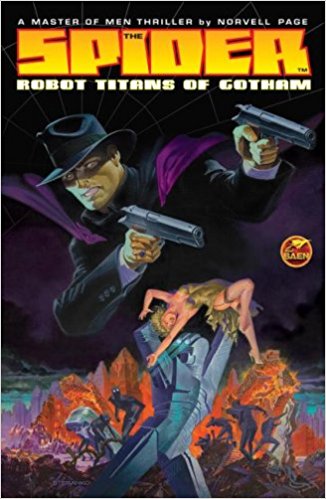The Spider Revival Part 2: City of Doom
 Last week, I reviewed the first volume in Baen’s trade paperback reprints of the adventures of Norvell Page’s grisly pulp hero, The Spider. Now, I plunge into the violent maelstrom of … The Spider: City of Doom!
Last week, I reviewed the first volume in Baen’s trade paperback reprints of the adventures of Norvell Page’s grisly pulp hero, The Spider. Now, I plunge into the violent maelstrom of … The Spider: City of Doom!
The three novels reprinted in this volume are The City Destroyer, The Faceless One, and The Council of Evil. The City Destroyer, which Page submitted under the title Crumbling Doom, is the earliest of Baen’s reprinted Spider stories, published originally in the January 1935 issue of The Spider. It also appeared in Pocket Books’ reformatted (with pointless modernizing) series in the ‘70s. It ranks as one of the Norvell Page’s best-written works, but it has an ugly timeliness that dulls the edge of the absurdist fantasy and may unsettle some readers. In the opening chapter the villain, decked out with the bland handle “The Master,” steals the secret for a metal-corroding dust. Richard Wentworth thinks the Master plans to use the chemical invention to break into bank vaults, but he should know that his adversaries don’t think that small. Instead of wasting time with piddling safes, the Master uses the chemical to knock down entire New York skyscrapers, killing thousands of people. His first target is New York’s newest, tallest building, and the writing dwells for a few pages on a gruesome depiction of the skyscraper’s collapse and the gory aftermath, complete with fleeing crowds, a dust cloud pluming over the Manhattan skyline, and trapped people trying to escape certain death in a crumbling tower.
Uhm … not a pleasant memory. At times, our world and that of the pulps share tragic similarities. Amidst the Great Depression and staring toward an oncoming second world war, pulp authors occasionally tapped into an insecurity not far removed from our own. The City Destroyer delivers more fear and tension than any thriller you’ll find on the recent bestseller lists, but new readers should be prepared for moments of queasy familiarity. It isn’t much of a nostalgia trip, and even the Spider’s heroics can’t halt an obscene death toll. I would conservatively estimate that seven thousand people perish during this story.








